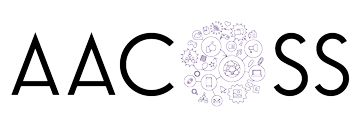
Schools
The information and links below are shared to help you with some of the questions you may have due to the unprecedented situation we find ourselves in during the coronavirus pandemic. Online safety is such a huge area we can’t hope to cover everything but we hope you find this information useful. Some of the links and resources are from members of AACOSS, others are from sources (individuals and organizations) that we trust.
Disclaimer: the information given in the video is for advice and guidance. It does not constitute legal advice, nor does it state what schools ‘must do’ to comply with any statutory safeguarding or data protection requirements.
The video below gives schools some important points and some further points to consider for remote learning and live streaming of lesson content. If you’re visually impaired or prefer to read the text of the video, the complete text is below the links.
If you are an organization such as a charity, youth or community group, adoption service you can see a further video HERE.
If you are a parent or carer you can see a further video and more information HERE.
Policy
Remote Learning and Live Streaming
Other useful links
AACOSS have created a simple tips leaflet for young people. This is a template to which you can add your own school logo and contact details and has been created in Microsoft Word so that you can make any changes or additions. The template is copyright free and you can use as you see fit.
To download the template click HERE.
Internet Matters #StaySafeStayHome – good advice for families along with descriptors of current apps such as Houseparty and Zoom for home contact – click HERE.
NCA CEOP are publishing online safety activities every fortnight for use in the home and have developed a survey to gauge what kind of issues people would like to see covered – click HERE
Coronavirus advice and mental health support from Young Minds – click HERE
Ofcom the UK regulator have put together a reliable set of information to try to combat fake news relating to Covid-19 – click HERE
Video Text
During this period of isolation in relation to the COVID19 virus schools are receiving a lot of advice from a myriad of sources on how to cope with remote education and how to keep children safe online. There has also been a huge increase in the amount of time that children are spending online with families trying to juggle working from home, their children’s education and their family’s wellbeing.
AACOSS members are familiar with a great deal of the advice being offered by both commercial companies and voluntary organisations, some very good and some not so. In order to assist schools and staff with understanding current tools, security issues, safeguarding and reporting we’ve put together a short list of things to think about. All members of AACOSS have individual specialisations and we’re available for questions and support during these uncertain times, you can contact us individually via the AACOSS website
In a moment I’m going to be giving you some important points to consider before you consider remote learning but our advice is that if you’re going down this route and you’re using a video feature we recommend you use pre-recorded videos rather than live streaming. The reason is that going live adds a whole other level of complexity and if you’ve never done this before and you haven’t got all your policy processes in place this is no time to start experimenting. London Grid for Learning have put a great article together of things to think about before you live stream and there’s a link to that article below this video.
So with that said I just want to offer some important points followed by a few further points to consider
Important Points
Policy – Schools already have a clear duty of care and obligations in relation to child protection and statutory guidance affirms those obligations, but you also need to update your child protection policy in response to the pandemic and to save you some time Louis Donald who is the Trust Safeguarding Manager at Stowe Valley Multi Academy Trust has kindly given access to their draft policy which you can download from the link below the video.
Connectivity – consider the extent to which children in families without wi-fi or devices will be disadvantaged. Not every family is able to afford the required technology and even if they do, this may be a shared device. Equally some families will have no broadband at all and might be constrained by 4G or even 3G.
Platform – you may already have a learning platform or VLE, but if you’re using Google Classroom or Office 365 already then you can use either Microsoft Teams or Google Meet. We’re seeing a lot of good feedback with Microsoft Teams, but a lot of schools and organizations are using Zoom and you may have seen some of the security and privacy concerns around this. Zoom are responding pretty quickly to concerns but equally this catch-up gives a sense of unease.
We definitely don’t recommend using the free social media apps like Houseparty, Facebook and Whatsapp for a variety of reasons such as age restrictions, data protection and personal information harvesting, but also remember that there should be a clear audit trail just in case something goes wrong. Regarding the audit trail, some organizations suggest you should record the live stream, others say you shouldn’t. We recommend you do record because of the need for an audit trail, but again this adds complexity, because if you’re going to record there may be circumstances when you need explicit consent of all users to comply with data protection requirements, it can’t be implied consent, and that explicit consent will depend on the age of the child, whether faces are being shown, what you’re talking about and much more. Under 13 only the parent or guardian can give permission, but students 13 and over can give their own consent. But what do you do if they don’t give consent? And if you are going to record, do you know where and how to store that data securely?
As with everything at the moment, we find ourselves in less than ideal circumstances and there needs to be an element of pragmatism, it won’t be possible to tick every box, but you have to carry out a risk assessment and get approval before you do anything.
Finally on this point, if you’re using a non-educational specific platform, ensure you’re using a school account, don’t set up a personal account and use that.
Security – whatever platform you use, ensure that it’s locked and password protected. Don’t share the details with students over public channels such as social media, and ensure your students don’t share the details either.
Oversight – It’s a good idea to ensure that another member of staff is overseeing what is happening via these platforms to ensure that everyone is safe and any incidents are reported.
Reporting – have a means where students can report concerns such as a dedicated email address so that they can report any issues. Don’t use personal contact details.
Safeguarding and data protection – finally, before you do anything you must consult with your designated safeguarding lead and your data protection officer to ensure that you’ve got all the right boxes ticked and any required risk assessments have been carried out, going back to a point I made earlier, this isn’t the time to experiment.
Further considerations
So you’ve decided you’re going to provide remote learning, I just want to offer up some further important points for consideration, most of which will hopefully be common sense but they’re all worth mentioning:
Keep it professional – whatever remote learning you’re delivering, and particularly if it’s video, language must be professional and everybody should be wearing suitable clothing. In other words, just because it’s remote, it’s still a classroom and your school code of conduct and behaviour policy should be applied. This also means that computers and devices should be in appropriate spaces, not in bedrooms.
Live classes should last a reasonable length of time, or the session may prevent the family getting on with their day or parent’s work time on the device. Students required to respond to online notifications and deadlines to upload their work can feel anxious and overwhelmed. Remote learning should not involve synchronous online learning only. Some teachers recommend weekly assignments, podcasts, videos and slide presentations.
Remember that some students may not engage, some families may be coping with illness, bereavement or struggles to get food or money. Children with autism spectrum conditions may find it difficult to accept that ‘school’ work should be done at home – they often find ordinary homework difficult to accept and their levels of anxiety will be higher than usual and may lead to more panic attacks
And finally – this is a great time to reinforce those simple online safety messages. They’re always important, but right now is more important than ever.
Summary
We can’t possibly hope to cover everything and every situation but hope that the pointers given in this video give a little clarity to the things you need to be thinking about, even if that clarity is that all of this is too difficult and there’s no way you can do it with the complete assurance that every safeguarding and data protection angle has been covered. But also remember that there needs to be a degree of flexibility and pragmatism and that’s where your risk assessment comes in.











